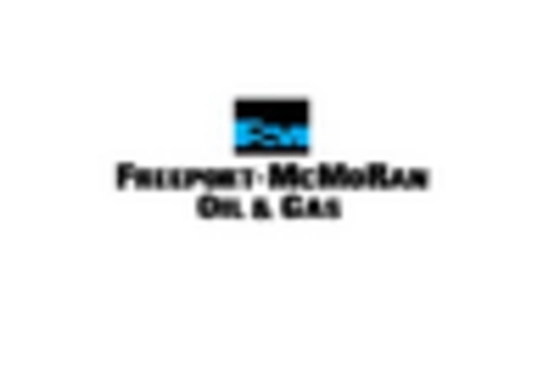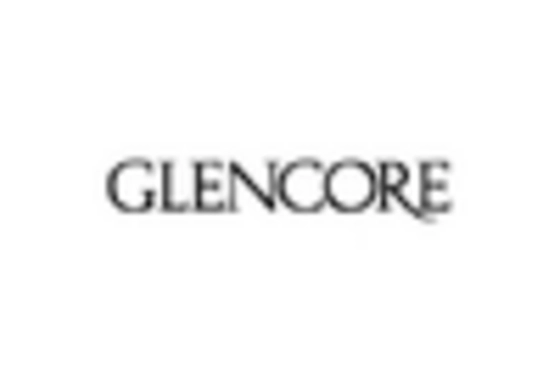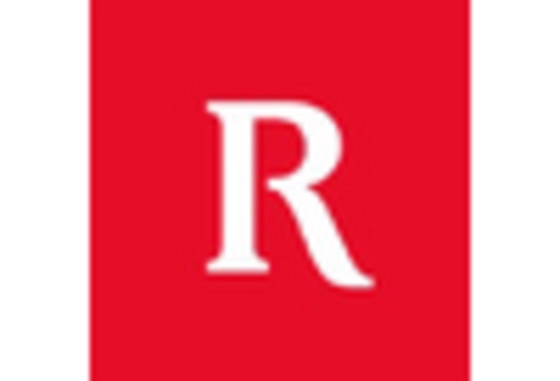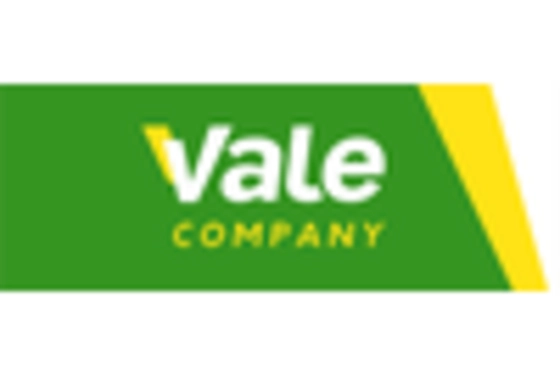Increasing Urbanization Trends
Increasing urbanization trends are significantly influencing the Mining Metal Market. As populations migrate to urban areas, the demand for housing, infrastructure, and services escalates. By 2025, urban areas are expected to house over 60% of the global population, leading to heightened consumption of metals such as copper, aluminum, and steel. This urban expansion necessitates substantial investments in construction and infrastructure, thereby driving demand for mining outputs. Mining companies are likely to respond by scaling up production to meet the needs of urban development. The Mining Metal Market, therefore, stands to gain from this trend, as urbanization not only fuels metal demand but also creates opportunities for innovation in mining practices and supply chain management.
Rising Demand for Electric Vehicles
The increasing demand for electric vehicles (EVs) is a pivotal driver in the Mining Metal Market. As governments and consumers prioritize sustainability, the need for metals such as lithium, cobalt, and nickel has surged. In 2025, the EV market is projected to grow significantly, with estimates suggesting that over 30 million units will be sold annually. This growth directly correlates with the Mining Metal Market, as these metals are essential for battery production. Consequently, mining companies are likely to ramp up exploration and extraction efforts to meet this burgeoning demand, potentially leading to increased investments in mining technologies and infrastructure. The shift towards EVs not only influences metal prices but also shapes the strategic decisions of mining firms, as they adapt to the evolving landscape of consumer preferences and regulatory frameworks.
Technological Innovations in Mining
Technological innovations are reshaping the Mining Metal Market, enhancing efficiency and sustainability. The adoption of advanced technologies, such as automation, artificial intelligence, and data analytics, is transforming mining operations. In 2025, it is projected that the implementation of these technologies could lead to a 20% increase in productivity across the sector. Moreover, innovations in extraction methods and processing techniques are likely to reduce environmental impacts, aligning with global sustainability goals. As mining companies strive to optimize their operations, the demand for metals is expected to rise, driven by improved extraction efficiencies. This technological evolution not only supports the Mining Metal Market but also positions it as a leader in sustainable practices, potentially attracting investment from environmentally conscious stakeholders.
Infrastructure Development Initiatives
Infrastructure development initiatives are a crucial driver for the Mining Metal Market. Governments worldwide are investing heavily in infrastructure projects, including roads, bridges, and renewable energy facilities. In 2025, it is anticipated that infrastructure spending will reach unprecedented levels, with estimates suggesting a growth rate of 5% annually. This surge in investment necessitates a wide array of metals, such as steel, aluminum, and copper, which are integral to construction and manufacturing processes. As a result, mining companies are likely to experience heightened demand for these metals, prompting them to enhance production capabilities. The Mining Metal Market is thus positioned to benefit from this trend, as increased infrastructure spending not only drives metal consumption but also stimulates job creation and economic growth in mining regions.
Regulatory Changes and Environmental Policies
Regulatory changes and environmental policies are increasingly shaping the Mining Metal Market. Governments are implementing stricter regulations aimed at minimizing environmental impacts associated with mining activities. In 2025, it is anticipated that compliance with these regulations will require mining companies to invest in cleaner technologies and sustainable practices. This shift may lead to increased operational costs but also presents opportunities for innovation and efficiency improvements. As companies adapt to these regulatory frameworks, the demand for metals that support green technologies, such as rare earth elements for renewable energy applications, is likely to rise. Consequently, the Mining Metal Market may experience a transformation, as firms align their strategies with evolving environmental standards and consumer expectations.


















Leave a Comment